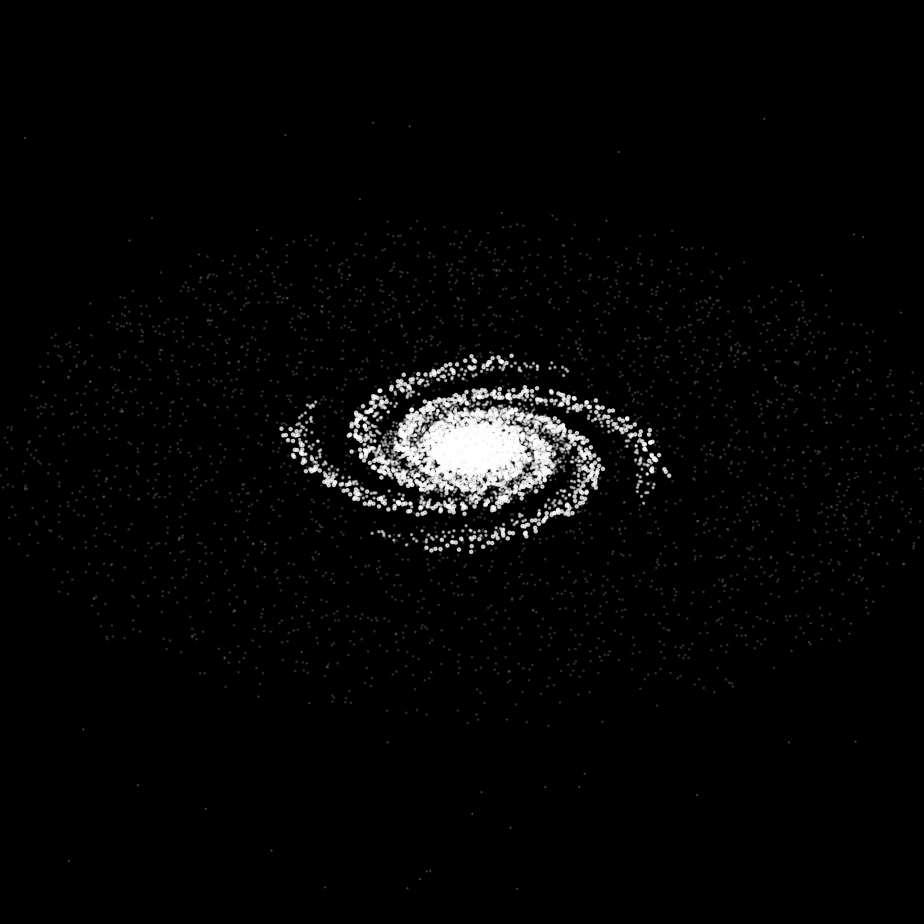Galaxy Particle Spiral
2025

Overview
This spiral galaxy emerges from exponential growth curves shaped by the formula radius = r × e^(bθ). With θ increasing in radians, each spiral arm curves outward in a smooth logarithmic sweep, emulating the structure seen in real galaxies. I assigned rotational offsets by subtracting π times a rotational constant from θ, giving the arms their distinctive twist. Random integer values added to the coordinates introduce fuzz, spreading points slightly to simulate natural irregularity. The decay constant b controls how tightly the arms spiral, and the choice of values for each arm determines their orientation and scale.
The central bulge and haze are shaped by layered distributions of normally and uniformly spaced points in three dimensions. The spherical core is built using Gaussian noise across x, y, and z, with z compressed to form a thin galactic disk. The surrounding haze relies on a square root distribution of radii to bias particles toward the center, paired with random angular positions in polar coordinates. This creates the illusion of swirling matter and star density gradients using only spatial variation and layered geometry.
Finally, the entire system rests in a volume of randomized background stars, distributed uniformly within a cube of space. While the bulk of the structure remains flat, the added vertical displacement for each particle introduces subtle three-dimensionality. The result is an interplay of mathematical elegance and spatial depth. By tuning exponential decay, radial growth, and noise-based displacements, I constructed a spiral formation where every arc, cluster, and scatter stems from precise mathematical relationships.